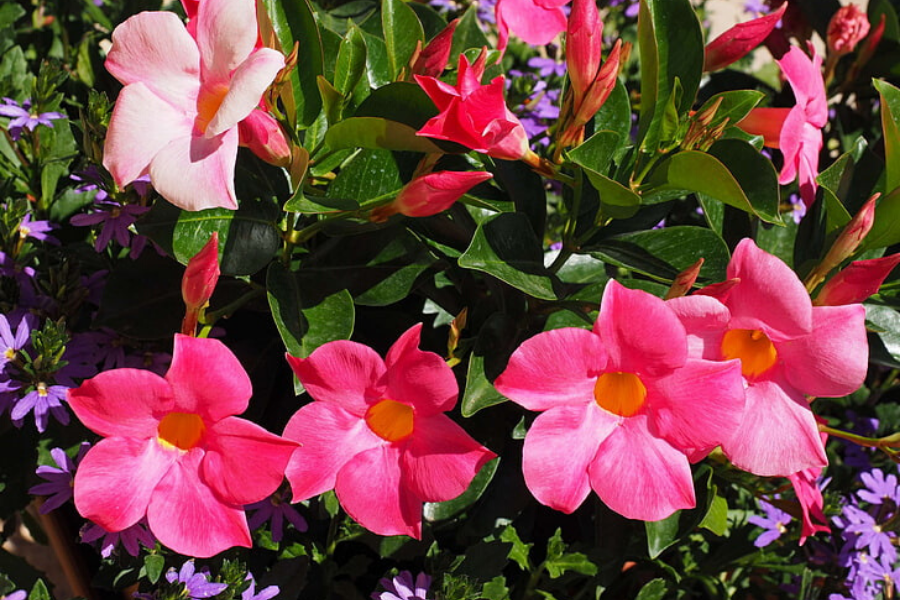
OVERCOME OBSTACLES WITH A DIPLADENIA
Among the climbing plants with more beautiful flowers we find Dipladenia, better known by the name of Mandevilla (official name).
In recent years, dipladenia have acquired great success as terrace plants, thanks to the fact that, if grown outdoors, they tend to have a long flowering season, from April to May until the first cold of autumn.
Why is Dipladenia or Mandevilla perfect for growing in pots (even better "in boxes") on the balcony?
It is a fast-growing plant and in a short time will be able to give bright colors to the bare spaces of a terrace, climbing impressively along the appropriate holds (very comfortable are plasticized nets of any size) for many meters. Dipladenia is a real expert climber.
He loves height and is not afraid of emptiness: he quickly grows in height, but can easily be grown as hanging.
If you are new to the world of gardening, dipladenia can surprise expectations and prove to be a faithful companion to embrace the new hobby. This is because caring for the plant requires minimal effort for maximum yield. A lush and colorful garden will be the result of a good cultivation that is not at all demanding.
The dipladenia plant fears the frost, therefore it is strictly forbidden to plant it where temperatures drop below 8 ° C. As far as the soil is concerned, it prefers well-drained, loose and rich in nutrients. Being a fast growing tropical plant, it is good to often fertilize the soil in which it is planted. If the cultivation takes place in pots, it is good to add gravel or sand to the soil.
Dipladenia prefers outdoor locations, but never in direct sunlight. A shaded area (half shade), protected from currents, is ideal for seeing your plant always healthy and ready to amaze with its vigor.
When we talk about dipladenia, sundaville or mandevilla, we are treating the same type of plant. This is because dipladenia has about 30 varieties in nature; among the best known we have the white dipladenia, which differs for the 4 meters of height and the funnel-shaped white flowers with the yellow throat; the dipladenia splendens, pink, recognized above all for the size of the flowers and the accentuated scent; the red dipladenia, also called dipladenia sanderi, which has red flowers with a yellow throat and is the most common and finally the fuchsia dipladenia, with a very bright color and perfect not to go unnoticed.
The meaning of this plant is very curious: it symbolizes overcoming problems or exiting a difficult situation, both for love and work problems. Dipladenia is given to people who have to overcome or have gone through a bad time and have to fight or have struggled to do it.

 English
English Italiano
Italiano Español
Español Português PT
Português PT Français
Français Deutsch
Deutsch Polski
Polski Nederlands
Nederlands Svenska
Svenska

All comments